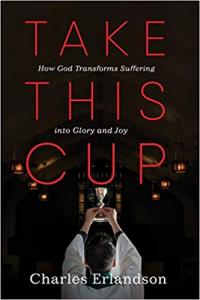Some Good Ideas Mixed with Careless Claims and Not So Good Ideas
Many Christians have recognized that the Church today seems to have a problem with men not coming to church. As a priest concerned about this trend, I decided to read David Murrow’s “Why Men Hate Going to Church.” While I found a lot of useful information in the book, I was disappointed in many places by Murrow’s lack of discernment in evaluating some of the information he presents. Also, he seems to have taken a shotgun approach and has included almost any information related to the lack of men in church, without regard for a deeper discussion of the issues. In addition, some of his prescriptions are not, I believe, good ones.
As with much of the book, Chapter 2 contains some good statistics demonstrating the lack of men in church. But Murrow gives this away when he mentions elsewhere that this has been true historically and is true today for the Church throughout the world, and not jus tAmerica. In other words, Murrow’s thesis proves too much. If Christianity has always had more women than men in their churches, then not only is this not a new or specifically American phenomenon: it also may not be that bad of a thing. Such nuances never enter into Murrow’s discussion.
In Chapter 3, Murrow lists some characteristics of men that may benefit the Church. While this list is somewhat useful, it also demonstrates a persistent, negative side of the book: Murrow portrays men in terms of particular stereotypes and seems to expect that all men will fit these stereotypes. Perhaps the most obnoxious of these is when Murrow claims that “highly masculine men are missing.” Masculine defined how? Murrow slants his definition of masculine away from any men who are verbal, studious, and sensitive. To me, these characteristics seem to be the kind that will make a good pastor.
In Chapter 7, there’s certainly some truth to Murrow’s assertion that preaching, theology, and worship have gone “soft” and that there has been an explosion of female-oriented ministries. But as is usual, Murrow mostly asserts and doesn’t prove his conclusions. Murrow also has a tendency to speak in such large generalizations that his book is less useful. For example, on page 9 Murrow writes that “Men don’t hate God or Christ or the Bible or Christianity.” Really? Many, many do.
He’s also right in that so much of contemporary praise music are market driven and is about God being intimately at my side and even contain imagery that is overtly romantic and feminine. Chapter 12 is also useful when Murrow talks about the Church’s use of feminine language and décor, hand-holding and emotion. These kinds of chapters help the reader form a larger picture of some of the many reasons churches may not attract men.
Chapter 10 on Twelve Things Men Fear About Church seems like a made up list of reasons not to go to church, and have very little to do with men specifically. It’s another place where I find Murrow’s analysis to be shallow.
Finally, some of Murrow’s prescriptions are market driven – one of the things he correctly criticizes. In Chapter 18 he says that sermons should use visuals, be short, use humor and laughter, and do something unexpected. Murrow seems to advocate dumbing down worship for men. Similarly, his prescriptions for how to make Sunday school relevant are destined to make it meaningless. Rather than returning to a richer biblical or catechetical approach, Murrow would have us hold Sunday school in a large, open room and use a style that gives boys “an equal chance to win.” His church has renamed Sunday school “Adventureland.” As children arrive, they’re allowed to run around in a large room with lots of things to play with. One room even has a climbing wall. There’s a competition and a video, a brief lesson, and then more free play. This sounds more like daycare than a time to instruct children in the things of God! Likewise, he advocates churches building cool spaces for youth to gather so they can play foosball and air hockey.
In summary, there are some good ideas in this book, but also some bogus ones, and not a lot of depth behind the ideas as presented.
I received this book free from the publisher through the BookSneeze book review bloggers program. The opinions I have expressed are my own and were influenced only by the quality of the book itself.











